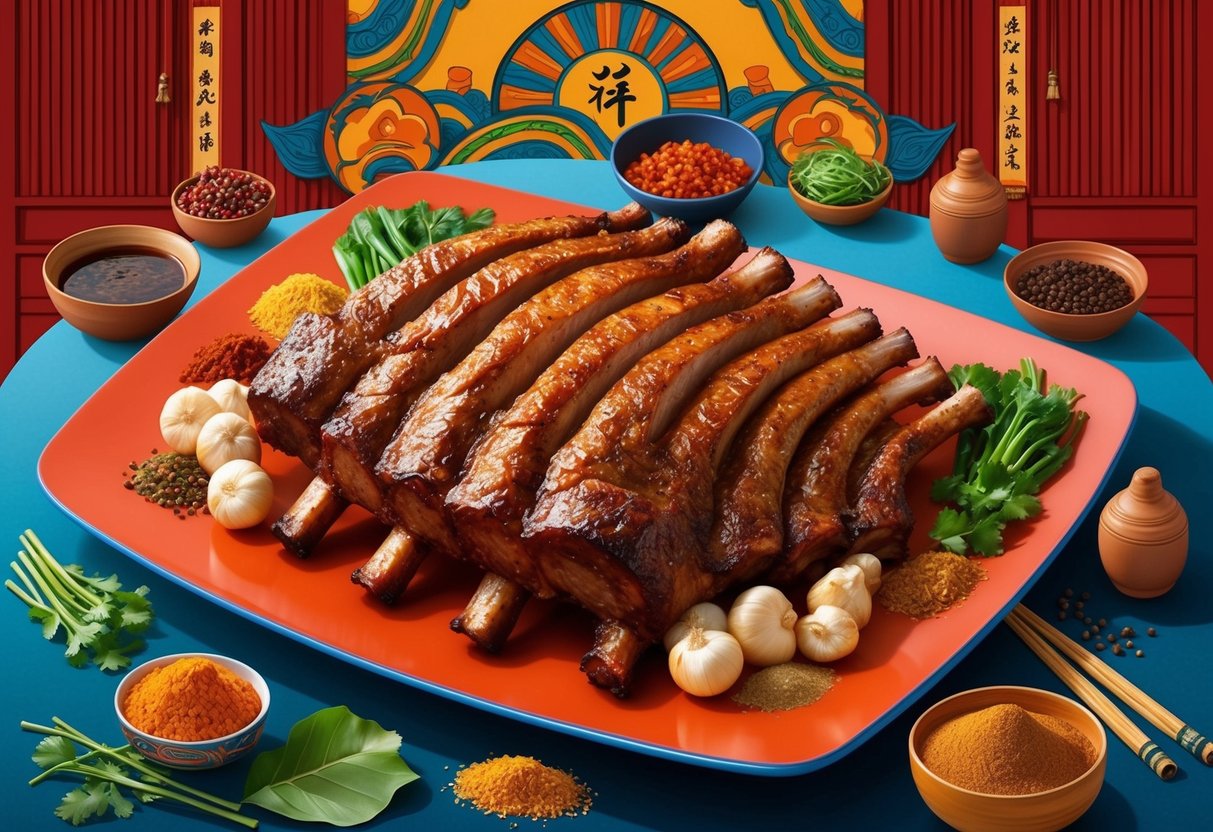
Italian Delicacies: Roman-style Pot Roast
Roman-style pot roast, also known as Garofolato, is a prime example of the rich flavors and hearty traditions found in Italian cuisine. This dish highlights how simple ingredients can be transformed into one of Rome’s most comforting and delicious dishes, with robust spices and slow-cooked beef at its core.
Slow Cooking Techniques
Traditional Roman pot roast relies on slow, gentle cooking to break down tough cuts of beef such as rump or chuck, infusing them with aromatic flavors. The process begins by browning the meat to create a deep, savory crust.
A classic Italian sofritto of carrots, celery, and onion creates the base, while garlic, bay leaves, and cloves add depth to the sauce. Tomatoes or Italian plum tomatoes are usually added for richness and acidity.
Red wine is commonly used to deglaze the pot, enhancing both color and flavor. The meat is then simmered for several hours, either on the stovetop or in the oven, resulting in fork-tender beef and a thick, rich sauce.
For extra flavor, some variations include dried porcini mushrooms or an extra pinch of cloves, which bring a subtle yet distinct aroma. The key is low heat and patience, allowing the flavors to meld and the meat to reach perfect tenderness.
For additional reading on Italian-style pot roast, see this Italian Pot Roast guide.
Serving Suggestions for Pot Roast
Roman pot roast is traditionally served in thick slices, topped with its cooking juices or sauce. It pairs well with creamy polenta or rustic mashed potatoes, which soak up the flavorful braising liquid.
Some prefer to serve it with crusty bread, perfect for mopping up every last bit of sauce. A simple green salad with a light vinaigrette offers a fresh contrast to the richness of the meat.
Roasted or steamed seasonal vegetables, like carrots or green beans, make excellent sides. For a truly Roman touch, sprinkle the pot roast with chopped fresh parsley before serving.
Leftovers are ideal for panini or pasta dishes the next day, further showcasing the versatility of this iconic dish from Rome. For a closer look at tradition and variations, including mushroom-based options, browse this overview of Brasato ai funghi, Italian pot roast with mushrooms.
Nigerian Classics: Jollof Rice
Jollof rice stands as one of the most beloved staples of West African cuisine, known for its deep flavors and vivid red color. From festive gatherings to simple family dinners, this traditional recipe brings people together at the table.
Key Ingredients in Jollof
The authentic flavor of Nigerian jollof rice comes from a blend of fresh tomatoes, red bell peppers, and onions. These are typically pureed and then simmered with oil, garlic, and ginger to create a rich, aromatic base.
Dried thyme, Nigerian-style curry powder, bay leaf, and seasoning cubes are often used for depth and heat. Long-grain parboiled rice is standard, allowing the grains to remain separate and absorb the sauce without becoming mushy.
Some versions may include vegetables like peas, carrots, or green beans for texture and color. Proteins such as chicken, goat meat, or beef can be added for a heartier dish, but the core of the recipe is always the tomato-pepper stew.
For more details on classic preparations, see this Nigerian jollof rice recipe.
Community & Celebration
Jollof rice plays a central role at major events in Nigeria, from weddings to birthdays and holidays. The dish is commonly served in large pots, making it ideal for feeding crowds and encouraging communal eating.
This emphasis on sharing and celebration is a key part of its cultural identity. “Party jollof”—often cooked over an open flame—carries a distinct smoky aroma and is highly sought after during celebrations.
It’s not just the food but the act of cooking together and the anticipation that bonds family and friends. Each household may put its own spin on the recipe, but the communal spirit and tradition remain unchanged.
More insights on social significance and party traditions can be found in this article about Nigerian jollof at community events.
Mexican Favorites: Enchiladas with a Twist
Enchiladas are beloved for their combination of savory fillings, zesty sauces, and soft tortillas. Their versatility makes them a standout among delicious dishes from Mexican cuisine, where both ingredient quality and homemade elements elevate each bite.
Homemade Sauces
A key difference between ordinary enchiladas and memorable ones is the sauce. Classic versions use either a red chili, green tomatillo, or creamy white sauce, but experimenting with alternatives can create something unique.
For a richer flavor, consider blending roasted tomatoes, dried ancho chilies, garlic, and onion with smoked paprika. Simmer the mixture for depth and let it thicken until glossy.
Fresh herbs like cilantro or epazote add herbal notes. Those preferring milder enchiladas might swap traditional red sauce for a creamy poblano or cilantro-lime crema.
Texture matters: smooth sauces soak in better, while chunkier styles give every bite a rustic feel. Some recipes even use a blend of colorado chile salsa roja and crema for a multi-layered effect.
Selecting Quality Tortillas
The tortilla forms the foundation of every enchilada. Corn tortillas are classic for their flavor and ability to hold sauce without falling apart.
Always use tortillas without preservatives for a more authentic bite. Warm them briefly in a skillet or steam under a towel so they remain pliable and won’t split during rolling.
For a twist, try blue corn tortillas or those made with added chia seeds for an earthier note. If you lean toward Tex-Mex style, some recipes call for lightly frying tortillas in oil to prevent sogginess and add flavor.
Soft, fresh corn tortillas contribute to a satisfying texture in Tex-Mex style chicken enchiladas, while flour tortillas lend a chewier bite, popular in some northern regions. Always avoid stale or overly thick tortillas, as these can overpower delicate fillings.



